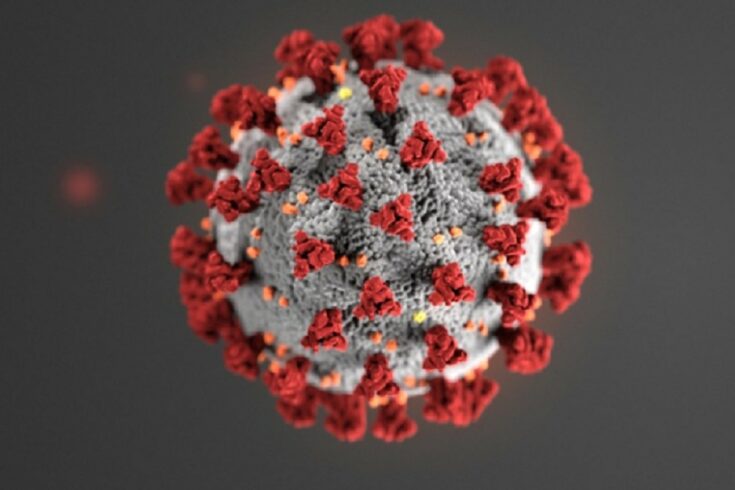UKRI-supported ISARIC, with the UK-CIC, has identified new biomarkers of inflammation that indicate the severity of COVID-19 and distinguish it from severe influenza.
In a study out today in Science Immunology, clusters of inflammatory disease markers (including two called GM-CSF and IL-6) scale with COVID-19 severity. The study is the largest of its kind in the world.
IL-6 is already proven to be a target for therapies that reduce disease severity in severe COVID-19, but GM-CSF has potential as a new marker of severity that distinguishes COVID-19 from influenza, giving insights into the causes of severe disease and potentially offering a new focus for therapy.
It is important to understand why some patients with COVID-19 experience severe disease, while others recover with less medical support.
A ‘cytokine storm’, where uncontrolled levels of cytokines (proteins released by immune cells) cause excessive inflammation, has been identified as a driver of COVID-19 severity.
Anti-inflammatory drugs such as corticosteroids (for example, dexamethasone) or those that interrupt cytokine function (for example, tocilizumab) substantially reduce mortality in COVID-19 patients.
However, studying the underlying inflammatory response in more detail can help researchers to identify new therapies and target healthcare resources to the most at-risk individuals.
Recruitment of patients
Teams of researchers from across the UK, including Imperial College London, University of Edinburgh and the University of Liverpool, combined their efforts to demonstrate that only select features of the cytokine response to COVID-19 distinguish the most severe forms of disease.
Using the ISARIC Coronavirus Clinical Characterisation Consortium (ISARIC4C) platform, the researchers recruited 471 hospitalised COVID-19 patients (who were stratified by disease severity) along with 39 outpatients with mild disease. They analysed 33 disease markers in the blood plasma of these patients.
They found that many inflammatory cytokines were elevated in severe COVID-19 and that levels are generally indicative of disease severity.
Patterns within the data
The investigators identified patterns within the data that are characteristic of the most severe cases of COVID-19. Two cytokines in particular, IL-6 (interleukin 6) and GM-CSF (granulocyte-macrophage colony stimulating factor) playing central roles.
When compared with archived samples from severe influenza patients, GM-CSF stood out as a specific marker for severe COVID-19. This cytokine can also be detected in early COVID infection, indicating it may play a pathologic role in early disease development in some patients.
While older patients showed a greater all-round inflammatory response, age was not a specific determinant of GM-CSF levels in this study. This suggests that a disease-specific mechanism that exacerbates age-dependent inflammatory responses is likely to operate in COVID-19.
There was also no difference found between responses of men and women as has previously been reported in other smaller studies.
Improving patient care
The findings from this study could impact patient care and treatment in two ways.
First, the study has rationally identified GM-CSF as a key component of the inflammatory response and as a potential therapeutic target.
Further research is also needed to see if GM-CSF could be used as a marker in early disease to identify those at risk of going on to develop more severe symptoms.
Professor Fiona Watt, Executive Chair of the Medical Research Council, said:
The speed with which we are learning about COVID-19 reflects the high level of cooperation between the researchers involved. UKRI and National Institute for Health Research funded platforms, like ISARIC4C and the UK Coronavirus Immunology Consortium, have pooled expertise and enabled rapid collection and evaluation of information.
It’s rewarding to see their findings leading the way to possible new targets for treatments that we hope will save lives.
A huge collaborative effort
Professor Peter Openshaw, ISARIC4C Lead and UK-CIC co-Chair, Professor of Experimental Medicine at Imperial College London, said:
These exciting findings are the result of a huge collaborative effort bringing together researchers and clinicians from around the UK to work together to understand more about COVID-19 and ultimately to improve patient care. The ISARIC4C network was crucial in allowing this type of research to be launched rapidly in the face of the pandemic, a need we identified following the 2009 influenza pandemic.
Putting in place all the groundwork ahead of time was fundamental to being able to conduct research this time round and enabled us to set up this collaborative network of unparalleled size and depth. Through ISARIC and the UK-CIC, we have been able to quickly develop our understanding of the immune response to severe acute respiratory syndrome coronavirus 2 (SARS-CoV-2) and potentially deliver real benefits to patients.
Professor Paul Moss, UK Coronavirus Immunology Consortium lead from University of Birmingham, said:
Building our understanding of the underlying biology of COVID-19 infection has been critical to our ability to improve patient care and develop new treatments to save lives. The immune system is central to the body’s response to SARS-CoV-2 infection, but is also one of the most complex systems with the body.
This study is an example of how researchers working together at scale can drive forward our knowledge at an incredible pace to offer new insights into how the immune response to COVID-19 is linked to disease severity. The UK Coronavirus Immunology Consortium, working with ISARIC4C, is a great example of how this team science approach can answer these key questions and help us hasten effective pandemic control.

